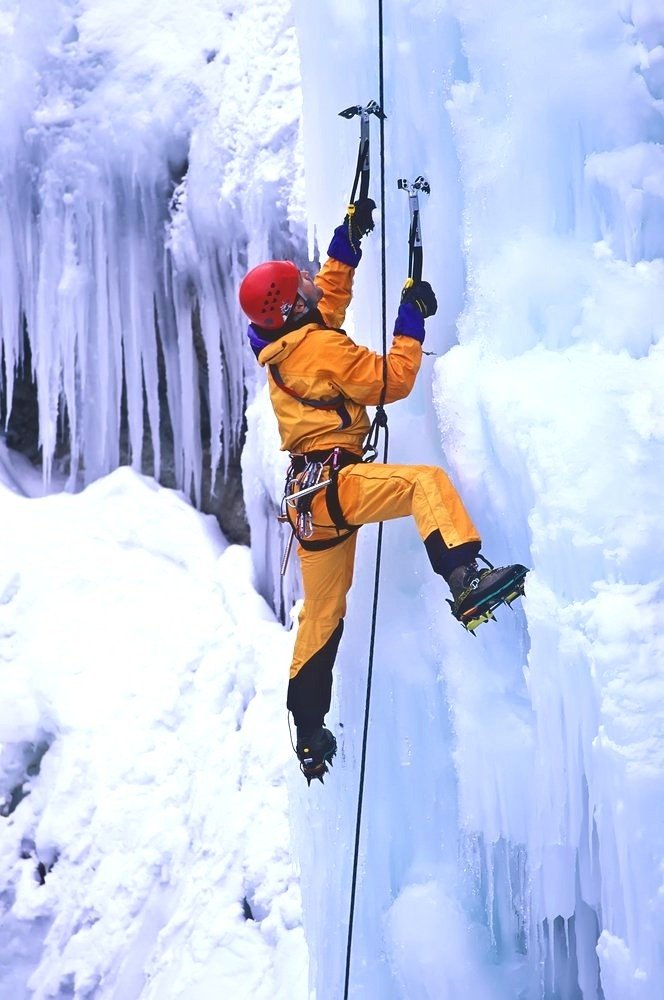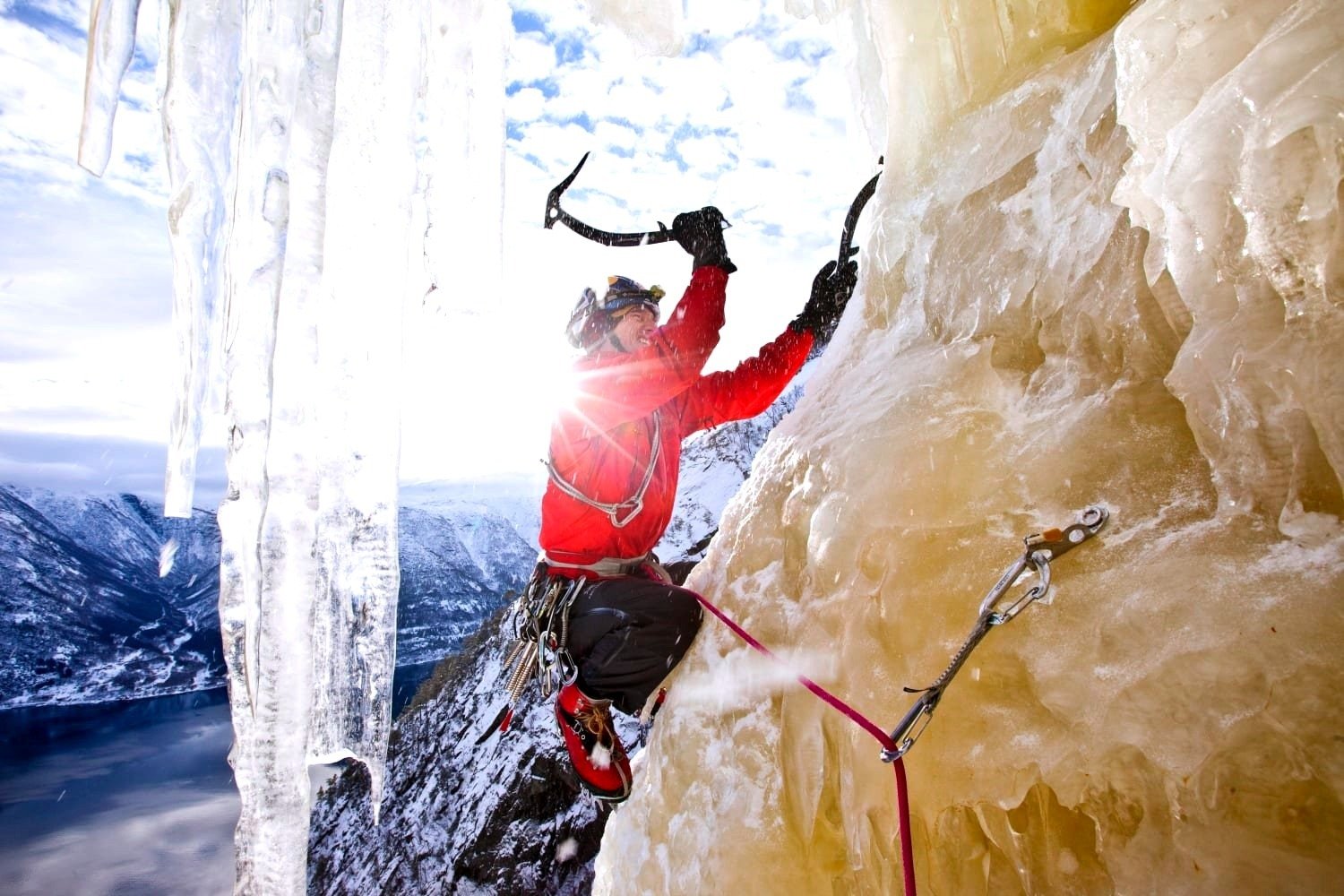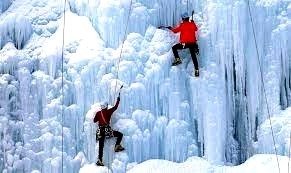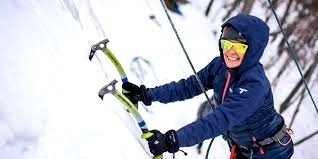Ice Climbing
What is Ice climbing?

Ice climbing is the sport of climbing frozen water features. Ranging in height from a few meters to several hundred, ice climbing varies around the world depending on the terrain and climate. You can get hard ice, soft ice, plastic ice, there's tons of different types! Ice climbing is a dynamic sport, combining determination, technique, speed, precision and excitement. Ice Climbing is the ascent of frozen terrain assisted by equipment such as ice axes, crampons, rope and ice screws. Ice climbing is a challenging sport with many risks and variables. It is hard to find a person who would not be impressed by the high peaks of the snow-capped mountains.
They are so gorgeous and mighty, but at the same time inaccessible and impregnable. But, there are people, for whom ice and snow are not an obstacle. They are ice climbers. Some of the common practices used for navigating the routes are, rope systems - using single or double rope systems, tying-in - attaching the rope to harness, belaying - where fixed or running belays are used, leading - where a leader climbs first followed by others, abseiling - where a fixed rope is used to descend, and lowering - descend using a belayer.

While the sport itself is fun, it helps to focus the mind and also, has countless physical benefits. You can build strength in your forearms, biceps, triceps, shoulders, and quads. You will also build your cardiovascular system and develop great core strength. Because climbers tend to spend a lot of time holding on to overhanging pieces of railings or concrete to train their ability to lock into position and stay there, it also improves their grip dramatically. Ice-climbing is the act of climbing frozen waterfalls or other ice formations.

For the purposes of climbing, ice can be broadly divided into two spheres, alpine ice and water ice. Alpine ice is found in a mountain environment, usually requires an approach to reach, and is often climbed in an attempt to summit a mountain. Water ice is usually found on a cliff or other outcropping beneath water flows. To be classified as ice-climbing usually indicates that the formation is reasonably vertical. On an ice climb you rope-up for safety, and climb using specialized crampons and ice-axes. Using crampons attached to boots for secure foot placements, and ice tool for secure hand placements, you ascend the ice kicking and swinging away on inclines that can range from 50° all the way to overhanging!
What is the benefits of Ice Climbing?
Ice climbing is a full-body workout that utilizes several key muscle groups and is almost guaranteed to leave you sore the next day. The fitness benefits of ice climbing come from several sources. Obviously, the climbing itself is a physically demanding activity that activates several muscle groups including your arms, quads, and core. There is also a large stamina component involved, as you will likely be on the ice for up to ten minutes at a time. Ice climbing is a strength-to-bodyweight ratio sport, so being lean can certainly help, but having defined, strong muscles is equally important. There are various ice climbing exercise which helps you to tone muscles and burning you fat and in turn gives you a muscular body. There are a lot of physical benefits in ice climbing that you may not have realized.

Ice climbing offers a very challenging physical workout. More than that, though, the extra activities surrounding ice climbing also contribute to your fitness. The approach can involve hiking several kilometers with a heavy bag, and even standing in the cold can help burn calories. Many people who have been climbers for years say that the time spent outdoors has enhanced their mental strength and physical shape. Try ice climbing and see how its mental and physical benefits will positively impact the other aspects of your life.
One of the great things about ice climbing is that you’re not just getting a workout in the moments when you’re on the wall. As I mentioned, there are other things that need to be considered when you try to quantify the workout the ice 토토사이트웹 climbing provides. You’re on your feet for eight hours at a time, hauling heavy packs of gear from one climb to the next. This provides a workout in its own.
